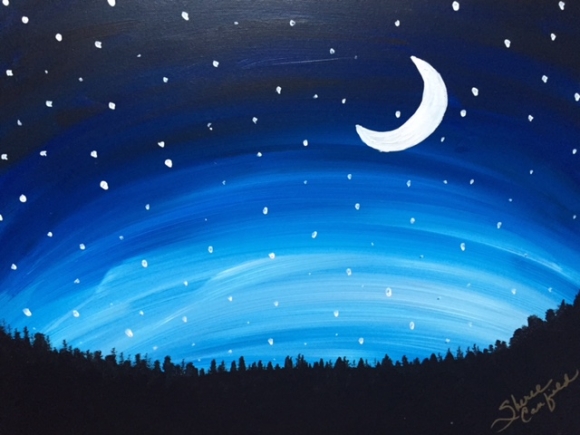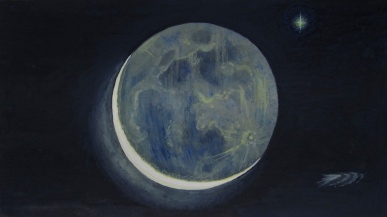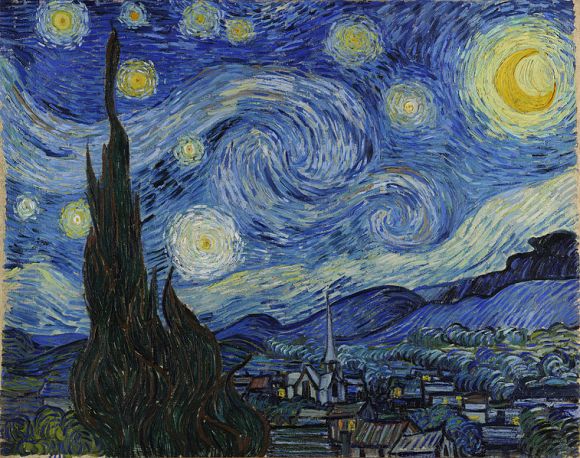“I spoke about wings
You just flew
I wondered I guessed and I tried
You just knew
I sighed
… but you swooned!
I saw the crescent
You saw the whole of the moon”[2]
Vincent Van Goth was in the lunatic asylum in Saint-Rémy-de-Provence when he painted one of his most iconic oeuvres, Starry Night, in the pre-dawn swirl of a June 1889 morning. He caught the crescent moon rising. How do we know?

In the leftmost image, the waxing (growing toward full) crescent curls like a D, whereas the waning (decreasing toward the new moon) curls like a C.
Unlike the sun, which always rises in the morning and always sets at night, the moon rises at all hours of the day and night, approximately one hour later each day as it goes from new to full and full to new again. The phases we see on earth are caused by the relative positions of the moon and sun in our sky.
When the moon rises in the east just as the sun set in the west (or sets in west just as the sun rises in the east), they are in perfect opposition and we see a full moon.
When the moon rises in the east at the same time as the sun, we see no moon at all. It’s the new moon, the first day of the lunar month. By extension, the crescent moon we see in the western sky on the next few days is referred to as the new moon. It traveled through the daytime sky, unseen by us, until the sun set and lit a small section of the orb, leaving the rest in shadow from our terrestrial point-of-view.

As time passes and the moon rises progressively later in the day, we come closer and closer to the full moon. After that point and for the next two weeks, the moon will rise after the sun sets, again progressively later until it rises just before dawn and appears to us as a thin crescent curling like a D – Van Gogh’s moon in Starry Night.
Why should we, creative writers, care? Well, if our narratives include a crescent moon in an evening sky, it had better be setting, not rising.
If we include a crescent moon in a morning sky, it had better be rising, not setting.
And should our characters find themselves travelling at night, aided solely by moonlight, they had better use other means of seeing where they’re going for some substantial part of the month, even assuming an extended spell of clear weather.

As for the Full Moon in all its mysterious glory, may we all stop Wondering, Guessing and Trying.
Let’s Know, let’s Swoon and let’s Fly!
[2] From The Whole Of The Moon, composed by Mike Scott (The Waterboys); lyrics © Sony/ATV Music Publishing LLC, Warner/Chappell Music, Inc. Complete lyrics here.
[3] Painting Starry Night by Vincent Van Gogh,
[4] Source: Astropixel.
[6] Moonlight Scene Near Leeds by Victorian-era artist, John Atkinson Grimshaw.

 [1]
[1]